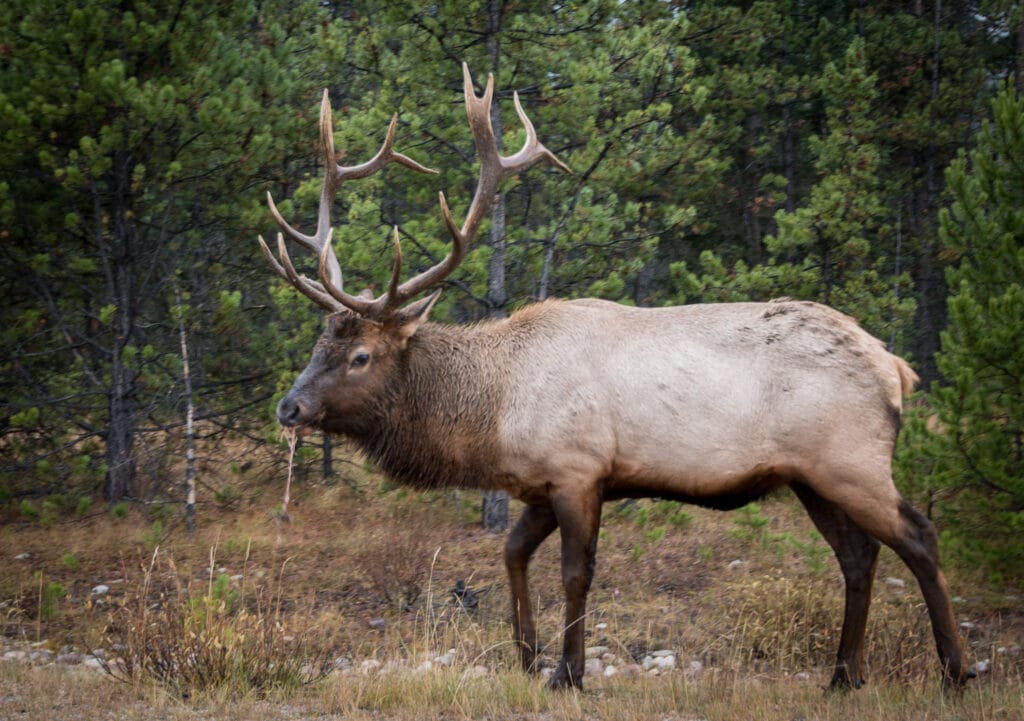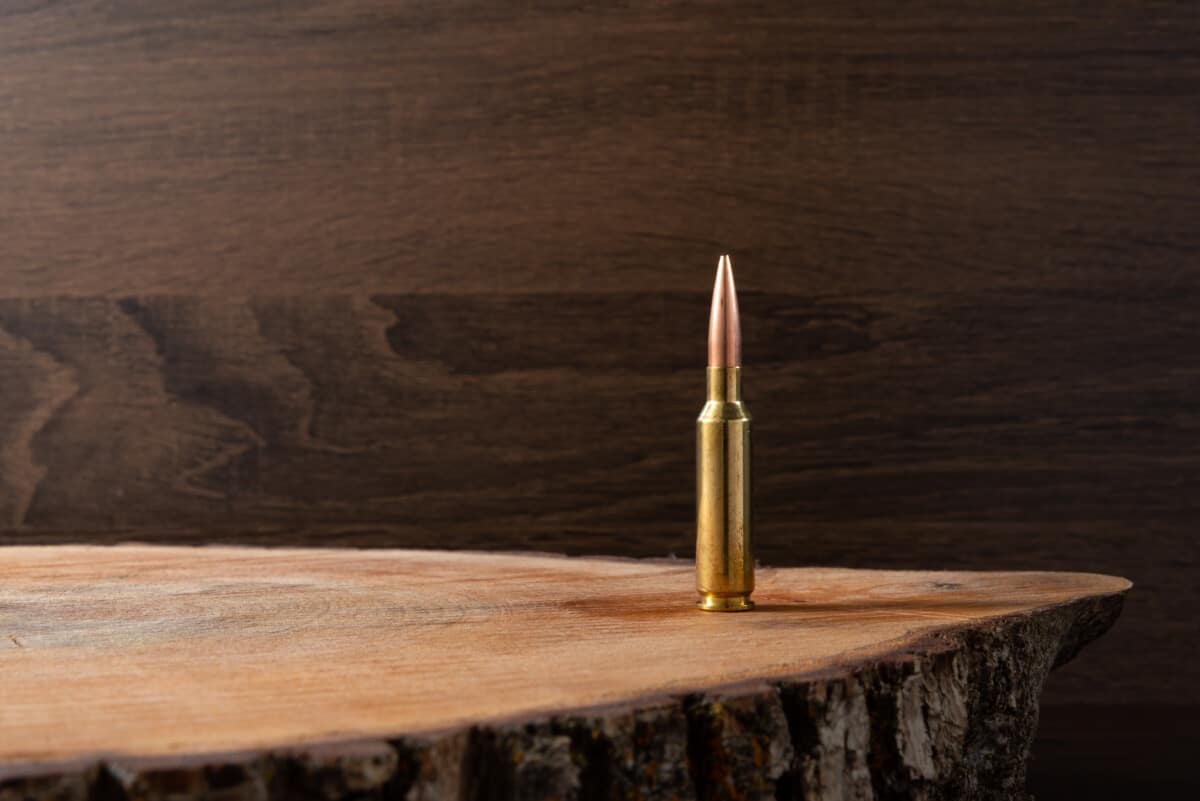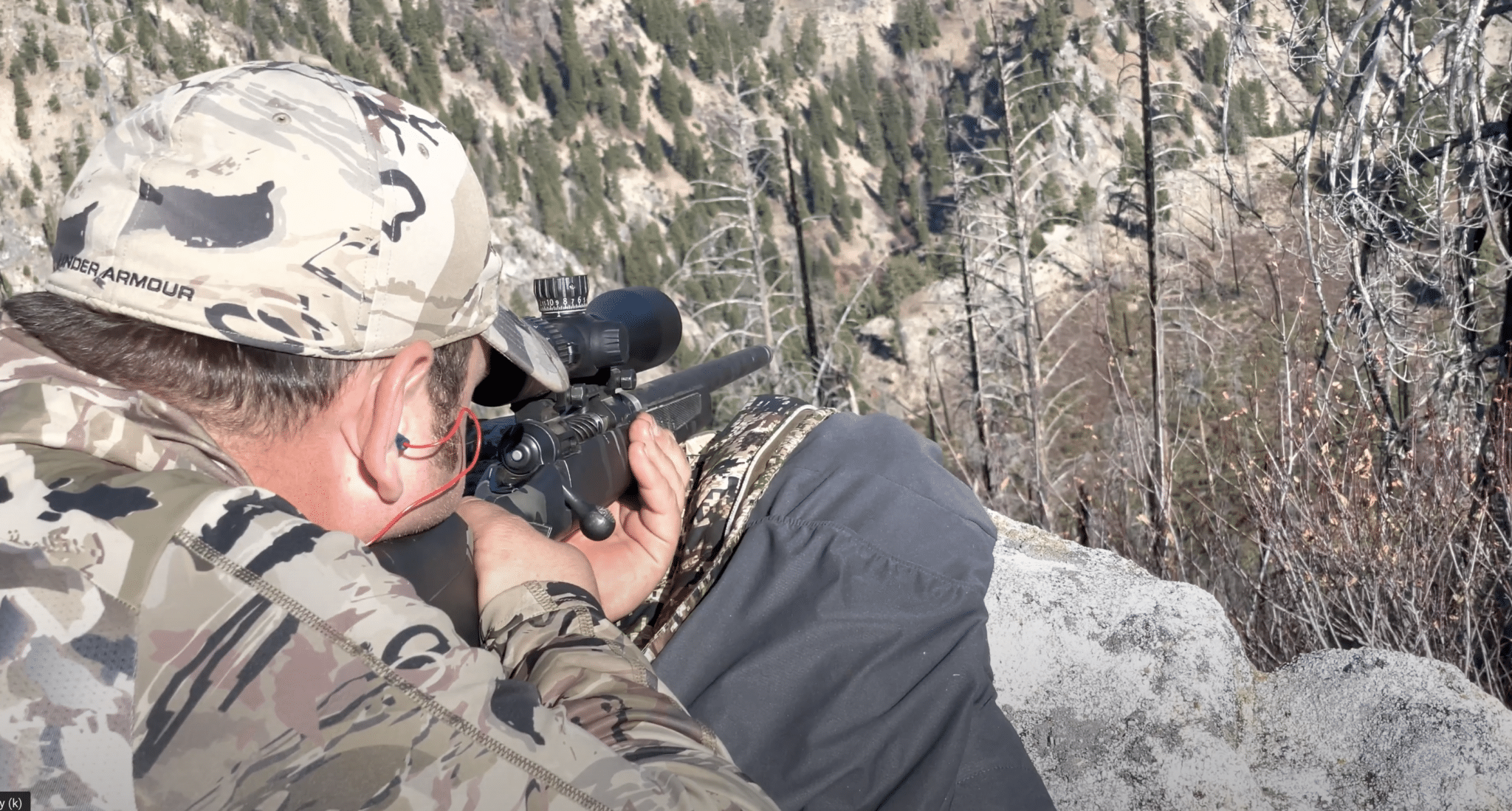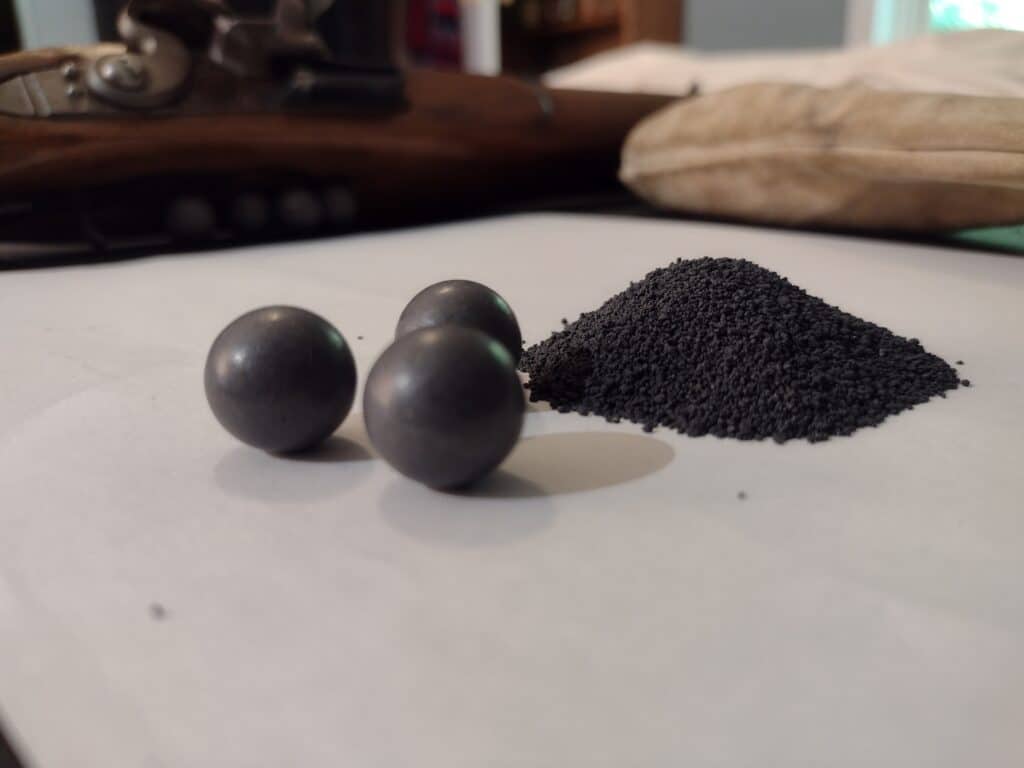6.5 Creedmoor: Is it REALLY enough for hunting bull elk?

I’m no stranger to ballistic battles and ammo arguments. With all the research and experience I have, I’m usually on the winning side. Still, sometimes I am proven wrong or learn new things. In the past few years, I’ve found myself carrying lighter and smaller calibers every time I’m in the woods.
The 6.5 Creedmoor is capable of killing elk, but most hunters consider it too light. As a general rule, 1,500 ft-lbs of energy is required for elk hunting, and the 6.5 Creedmoor maintains that to only 300 yards. However, its thin diameter and lighter bullets do not penetrate as deep as traditional elk rounds.
While the Creedmoor may not be ideal for elk hunting, it is still a workable choice if you pick a tough deep-penetrating bullet. A couple of my favorite loads would be this one from Barnes, or this one from Federal (affiliate links). Those are both copper (or partly copper) loads, which will penetrate deep into the vitals. It’s a great option for a youth or other shooter who can only handle the recoil of a Creedmoor, but wants to hunt.
By the Numbers: Statistics on Hunting Elk With the 6.5 Creedmoor
There are many different statistical measurements of a cartridge’s ability to take down game. Below, I show the three measurements I most commonly use.
For elk-sized game, it’s recommended to have 1,500 ft-lbs of energy. Honestly, I have found a raw look at ft-lbs of energy to be the least accurate measure of a cartridge’s ability to kill because it over-emphasizes velocity and does not take frontal diameter into account at all.
The second measurement is the Hornady HITS formula. I have found this to be the most reliable predictor of a cartridge’s hunting power. Hornady recommends a score of 900+ for elk-sized game.
Last, velocity. Many cartridges do not expand when the bullet travels slower than 1,900fps. Some can partially expand as slow as 1,650fps, but others do not expand at all below 2,000fps. Choose your bullet carefully if you see you’ll be losing velocity, but I use 1,900fps as a general barometer of sufficient speed to fully expand many hunting bullets.
6.5 Creedmoor Ballistic Data for Hunting Elk-Sized Game
| Ft-Lbs of Energy | Hornady HITS | Velocity | |
| Muzzle | 2,231 | 1,056 | 2,695 |
| 100 Yards | 1,978 | 994 | 2,538 |
| 200 Yards | 1,751 | 936 | 2,388 |
| 300 Yards | 1,544 | 878 | 2,242 |
| 400 Yards | 1,360 | 825 | 2,105 |
| 500 Yards | 1,191 | 771 | 1,969 |
| 600 Yards | 1,034 | 720 | 1,838 |
| 700 Yards | 904 | 672 | 1,716 |
| 800 Yards | 781 | 625 | 1,595 |
| 900 Yards | 675 | 581 | 1,483 |
| 1,000 Yards | 583 | 540 | 1,378 |
According to the data in the table above, the 6.5 Creedmoor may be adequate for hunting elk-sized game out to 250 yards. While many elk have certainly been killed with the 6.5 Creedmoor at much longer distances, these general rules would suggest that it may be unreliable at extended ranges.
Groung Breaking Bullet Technology is all that Makes the 6.5 Creedmoor Useable for Elk.
Changing technologies in ammo design have allowed us to use bullets that were previously considered undersized for large game.
The 6.5 is slightly smaller, a bit lighter, and a lot less powerful than the 270. But today, ammo companies and certain professional hunters are telling us the 6.5 can replace the .270’s spot as the most popular sub-30 caliber hunting rifle.
Recently, new bullet technology has caused a new change in the hunting world. Much as with the last several changes, we are now able to use lighter, smaller calibers than we previously thought we could. And, the traditionalists are against it.
Basically, the new advances in bullet design allow a bullet to both expand completely and penetrate deeply without adding more energy behind the bullet. With this new Technology, hunters are pushing the limits to find out just what they can do and where the limits actually are.
Add to that the ability of 6.5 Creedmoor to retain its energy and you can see why thousands of hunters have killed bull elk with its 143-grain bullet going 2700 fps. But there are some serious limitations of using this small cartridge, even with all the new-fangled technology.

The Setup. Bullet Selection.
Bullet selection for the 6.5 Creedmoor will be imperative if you choose to use this cartridge on an animal such as a bull elk. Due to its reduced effectiveness beyond 300 yards, your bullets selection and characteristics can either hinder the performance of the round or give it that little extra edge.

The most common bullet on the market today is going to be a copper jacket with a bonded lead core of some fashion usually tipped with either polymer or left as a rounded lead meplat. The expanding characteristics of these bullets are rather similar with the jacket folding back over itself and producing a “mushroom” shape. This allows for the bullet to retain mass and also transfer energy into the animal.
The problem with a bullet such as this is when your speed and corresponding energy is near its minimum recommended amount you can experience a lack of penetration especially if your bullet strikes a large bone. In some cases, even with moderate energy, these bullets can pancake out when striking a hard object such as an elk’s front shoulder joint, stopping penetration almost immediately.
The bullet that will give you that extra small assurance is a solid copper core bullet. Not to be confused with a full metal jacket (FMJ) round these bullets will have either a polymer tip or a hollow point design that insure a controlled expansion. The difference between these bullets and the ones previously stated above is the solid copper body instead of lead.
This bullet’s design still allows for the transfer of energy through the expansion of the bullet although, the main body of the bullet will hold its shape. This allows for better penetration through a harder object such as a large shoulder bone on an elk. The solid core of the bullet will not pancake out if your shot is unfortunate enough to strike in a less than optimal location.
For those looking to make the switch to a solid core bullet look for the brand name Barnes. Barns has bullets such as the TSX and LRX that are solid core and available in the 6.5mm caliber.
6.5 Creedmoor Limits Hunters to Perfect Shots, and Perfect Angles
Elk need a good shot to go down from a 6.5 Creedmoor. The only shot you can depend on is a broadside shot through the upper chest cavity. You may not reliably penetrate enough with a bad shot angle or if impacting the front shoulder.
In many ways, using a small-caliber, like the 6.5 on elk, is like going back 160 years. By that, I mean that you are taking away the energy and penetration that you could have with other modern calibers. You are giving yourself less of an advantage that way, and it’s fine as long as you realize it.
With a 30-06, I can shoot an elk quartering away, and even the dreaded quartering away shot angle that requires punching through the entire muscular, thick-boned shoulder. With the 6.5, I have the extra challenge of needing to wait for the right shot.
In the archery world, heavy bone is avoided at all costs due to its likelihood of stopping or even deflecting an arrow’s penetration. This is usually avoided with proper shot angel and assuring that the animal is not moving. The same process should be followed when it comes to the application of the 6.5 Creedmoor against a large animal such as a bull elk. Of course, the distance will more than likely be different when looking at this comparison although, the technique is interchangeable.
When looking at shot placement on an elk using a cartridge like the 6.5 Creedmoor ensure that the elk is at minimum broadside. This will give you a large target area and reduce the likelihood of hitting the heavy should bone. Do not worry about rib bones when aiming at an animal, both bullets and arrows pass through rib bones with little resistance.
With the animal broadside aim for a point of impact approximately 6 inches back from the shoulder joint and on the lower third line of the body. A good reference point is to line up your vertical crosshair with the animal’s front leg. Then with your horizontal crosshair line up the shoulder joint. The aiming point of your crosshair should be sitting in a spot known to archery hunters as the “golden triangle” due to its lack of heavy bone and thick lung tissue making for massive hemorrhaging and fast harvests.
My personal favorite shot angle is the slight quartering-away where I can line up my point of impact and my desired exit area. Usually, this makes for a point of impact just on the back edge of the “golden triangle” and my exit landing on top of the should joint. This allows for exceptional penetration and maximum damage through the chest cavity and any extra energy remaining in the bullet will be dumped into the offside shoulder.

Hunting Elk with 6.5 Creedmoor is like hunting deer with a 17 Hornet
Many hunters will use the 6.5 Creedmoor for elk, but applying that same logic to a deer is always refuted. I want to give you a shocking comparison. I’m going to figure 300 yards as the practical shooting distance here.
The best hunting ammo in 6.5 (Hornady 143-grain ELD-X) has about 1600 ft/lbs. of energy at 300 yards. The average max weight of a bull elk is 900 pounds. That comes out to 1.7 ft/lbs. of energy per pound of elk. remember that. Also, note that the threshold of expansion for that bullet is 2,000 fps.
Winchester’s 64 grain 223 deer load has about 600 ft/lbs of energy at 300 yards. The average whitetail buck weighs a max of 150 pounds. We get 4 ft/lbs of energy per pound of deer. That means that shooting a deer with a good 223 bullet is more practical and ethical than shooting an elk with a 6.5 Creedmore.
If I were to take that 6.5 with 1600 ft/lbs. against a full-grown elk and scale it down, that would be shooting a 150-pound deer with 255 ft/lbs of energy, or about a 17 Hornet. Suddenly the 6.5 guys set down their cup of coffee. I did too.
Now, I know that the 6.5 has bullets actually designed for big game and the 17 Hornet only shoots fragmenting varmint bullets but it’s still a legitimate-ish comparison of sorts. Just saying, if you think the 6.5 is okay for elk, don’t be dragging on the guys who hunt deer with a 223.
The 6.5 Creedmoor’s Low Recoil Helps Elk Hunters
With all the other traditional choices, why would you choose a 6.5 for an elk hunt? Could be one of many reasons, but the biggest ones are its relatively low recoil and flat shooting nature. It’s easy and simple to shoot. The average recoil of 6.5 Creedmore is 12 ft/lbs., which is on par with a hot 30/30 load.
The infamous 30-06 runs at around 21 ft/lbs. of energy. The difference between the two is like the difference between getting punched by a heavyweight and a middleweight boxer. They both impact, but one will knock you harder.
The 6.5 may be a much more shootable option if you have trouble with full power 30-06 recoil, and I do. Matching recoil to what you can handle well will make you a much better shooter. I’d much rather make a good hit with a small bullet than use a big cartridge that has given me a shooter’s flinch. Been there done that.
Then there’s its flat shooting nature. compared to other calibers with the same recoil and energy, the 6.5 Creedmoor is the flattest shooting. Having to not think about hold-over or reticle adjustment is invaluable to a hunt. Even more impressive is not having to take the time to really watch and read the wind.
The 6.5 Creedmoor has half the wind drift of other comparable cartridges for elk. That means that in most cases, you can just pick up your rifle and shoot without worrying about the wind. That all adds up to making a better shot. Once again, a plus for the little ole’ 6.5 Creedmoor.

6.5 Creedmoor is Not a Long-Range Elk Gun
Because the 6.5 Creedmoor is a lower power cartridge, it’s recommended to only be used on elk under 300 yards. At three hundred yards, the 6.5 Creedmoor has 1,600 ft/lbs. of energy, which is slightly above the accepted minimum of 1,500 ft/lbs. for an elk cartridge.
It sounds strange to me, living in an eastern woodland state, to hear about hunters making a 600, 500, or even a 400-yard shot. Those just don’t happen here. But I know that those long shots can be common in the western plains states and in mountainous regions.
The 6.5 hits its wall of effectiveness for elk at about 350-yards, but it’s closer to 290-yards with most rifles. Most guns don’t shoot as hot as the ballistics chart says.
The whole 1,500 ft/lbs. thing is the accepted minimum energy it would take a bullet of about .30 caliber to penetrate deep enough to reach the vitals at a less than desirable shot angle. Mabey a really bad shot angle won’t do, but one that’s not quite perfect is expected to do fine.
You see, from a perfect broadside shot, it only takes an inch or two of penetration to reach the vitals on an elk. If you shoot the animal at an angle, the bullet now has to go through more muscle and bone to get into the chest cavity.
If you shoot at a quartering away angle, there might be 6 inches of penetration, and contact with multiple ribs before the bullet enters en elk’s lungs. That should be considered doable with the 6.5 Creedmoor.
But, if you shoot at a quartering-toward angle, you have to shoot through the entire shoulder lengthwise and maybe the shoulder blade (20-inches penetration), before your bullet reaches the chest cavity. That ain’t gonna go too well.
Wane van Zwoll is a man I look up to in the Hunting and Shooting world. He has a video on YouTube where he drops a mature bull alk at 600 yards with his 6.5 Creedmoor. He is an amazing hunter and a crack shot. He hit it with a perfect broadside shot, requiring the least amount of energy to enter the vitals.
I am a huge proponent of “wait for a really good shot” whenever possible. Try to never shoot on much of an angle and you’ll probably never have an issue.
So, it should be at least still considered effective to about 300-yards in most scenarios. Let me ask you another question, a more important question. Does that limit you? Does a threshold of 300-yards force a hard limit on you when you otherwise could go past that?

What Gun do You Need for Elk?
What it really boils down to is, “how far do I need to be able to shoot?” consider your personal skill, the limitations of your region, and whether or not you are likely to get closer than 300-yards to an elk. In Michigan, most elk are shot at around 150-yards.
Our elk population roams the low piney woodlands and a further shot can be hard to line up. It’s also easier to stalk close to an animal in the thick woods. If you are in an area where a 500-yard shot opportunity is a norm and you have the skill to pull it off, perhaps you should choose a more powerful rifle.
Some of the classic options will do fine at these longer distances. The 30-06 with the right ammo can work great on elk out to 500-yards. The 6.5 PRC can handle the task at 600-yards every time. The 300 Win Mag will go further yet.

I’m not saying you need a heavy magnum rifle, because you don’t. On my bookshelf, I have accounts of pioneer hunters bringing down bull elk with a .60 caliber, 323-grain lead ball going roughly 1,600 fps. you just need to stay within the practical limitations of your chosen weapon
